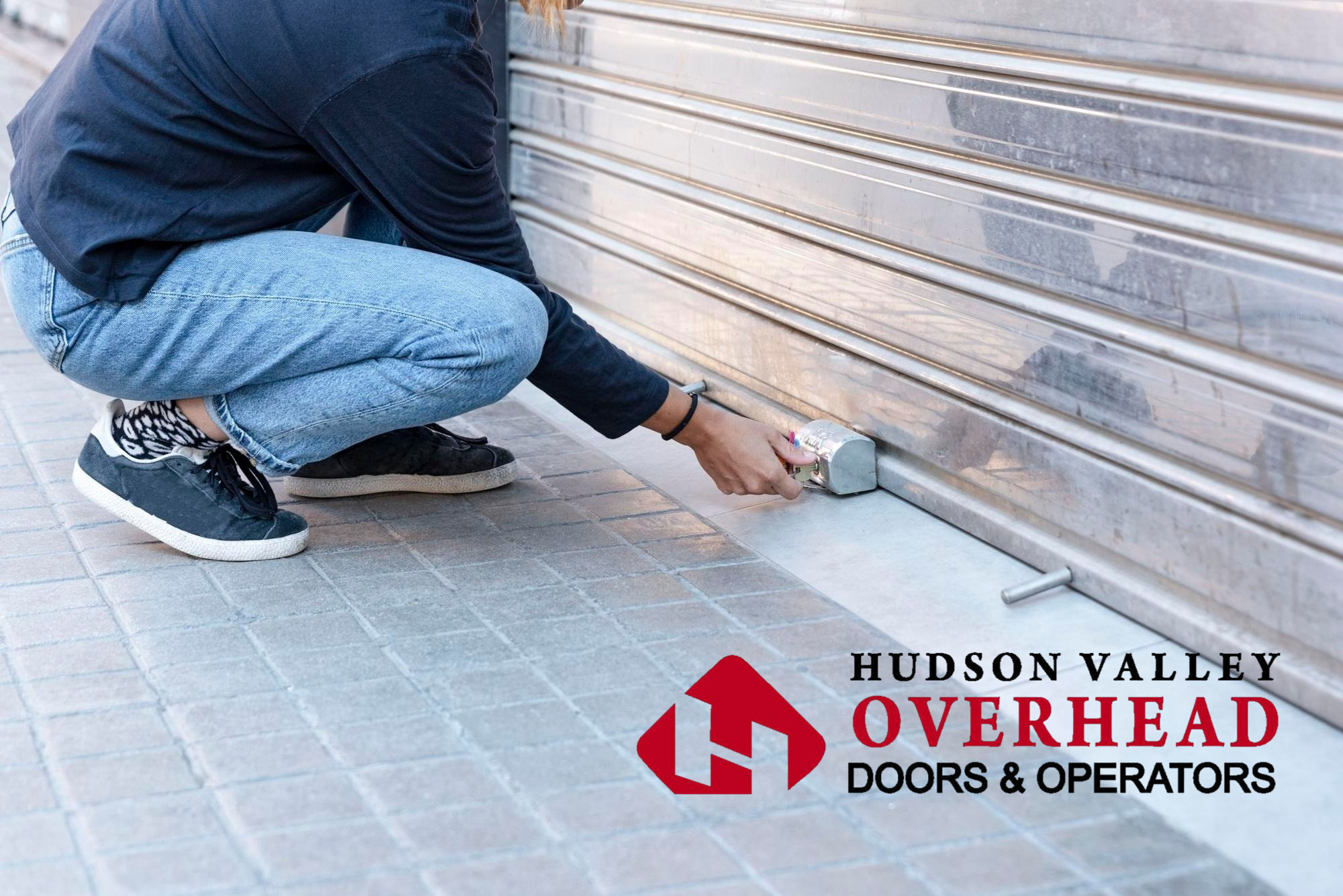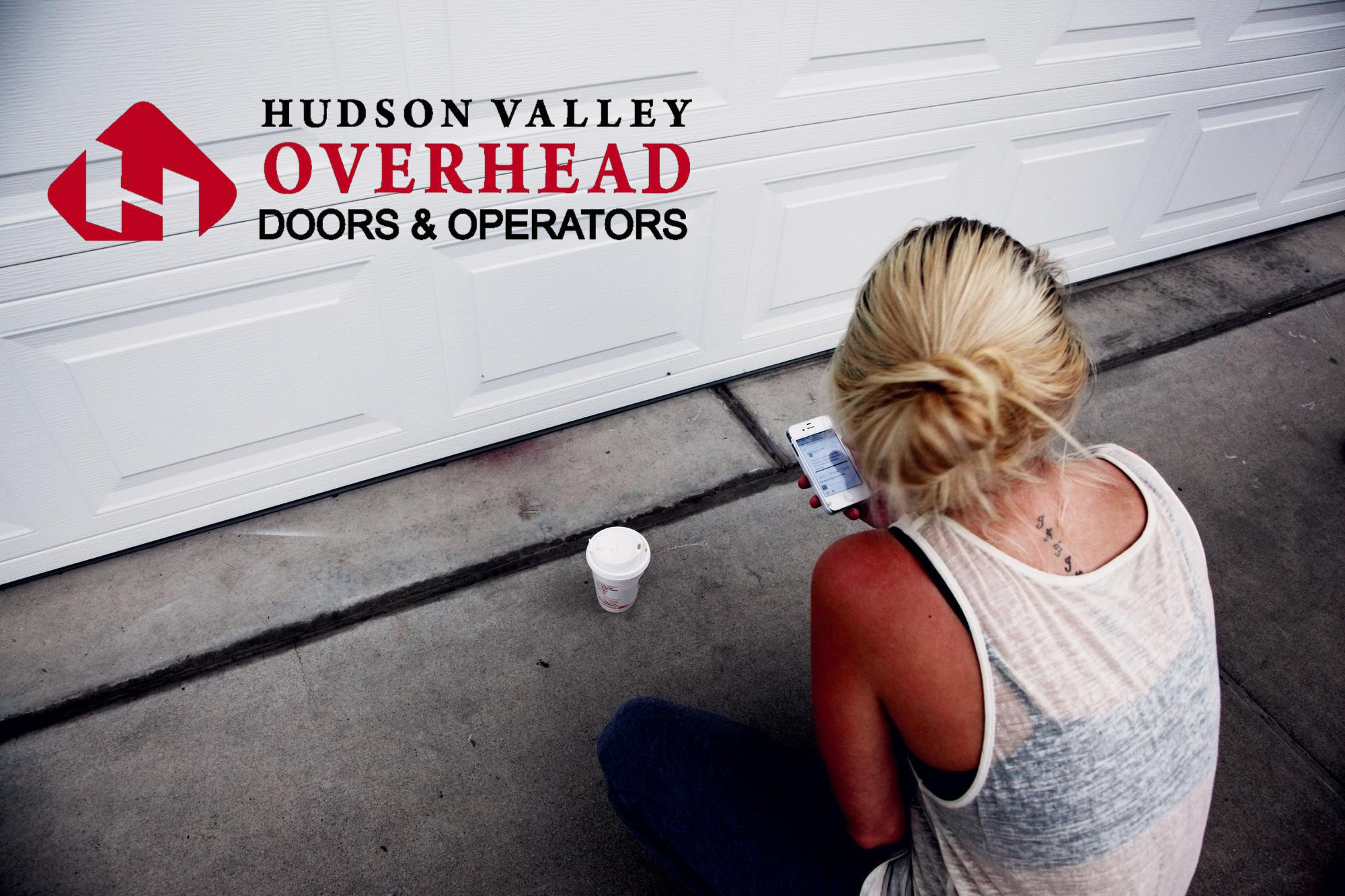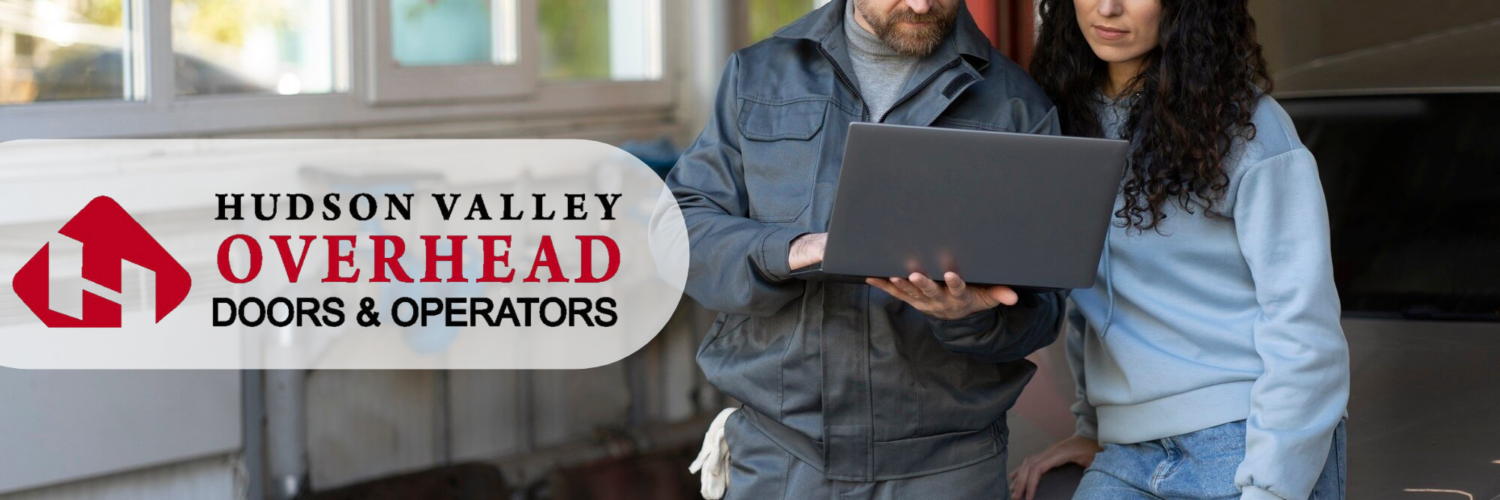The Critical Role of Garage Door Systems in Commercial Property Management
In commercial and industrial facilities, garage doors and roll-up gates for commercial properties are often integral to security, operational efficiency, and compliance. These systems control access to loading docks, protect high-value inventory, and facilitate the smooth movement of goods and equipment. While these systems are heavily relied upon, they are frequently overlooked in preventive maintenance planning often addressed only after a breakdown occurs. This reactive approach can lead to costly downtime, safety incidents, and avoidable repair expenses.
For property managers overseeing warehouses, retail spaces, or mixed-use developments in Dutchess County, the reliability and safety of garage door systems can directly impact daily operations and long-term asset performance. A malfunctioning door can disrupt deliveries, create safety hazards for employees and customers, and compromise security protocols, potentially exposing the facility to theft or vandalism.
Hudson Valley Overhead Doors & Operators, recognized in the Hudson Valley region for technical expertise, emphasizes that consistent, documented maintenance is the most effective approach for extending service life, ensuring compliance, and minimizing safety risks. This includes scheduled inspections, lubrication of moving parts, calibration of opener limit settings, and verification of safety features such as reverse mechanisms and photo-eye sensors.
Furthermore, integrating garage door system maintenance into broader facility management programs allows property managers to align with industry best practices, comply with ICC and NFPA standards, and provide documented proof of safety measures for insurance purposes. By prioritizing proactive care for garage doors and roll-up gates for commercial properties, managers not only protect physical assets but also uphold operational continuity and strengthen their facility’s safety culture.
Understanding the Scope of Commercial Garage Door Maintenance
Mechanical and Structural Components
Key elements such as torsion springs, lifting cables, rollers, hinges, and tracks undergo significant wear from repeated cycles, especially in facilities where doors are opened and closed dozens of times per day. Springs are under constant tension and can weaken or snap if not inspected and adjusted regularly, posing both operational and safety risks. Lifting cables may fray, stretch, or corrode over time, reducing load-bearing capacity and causing uneven or jerky door movement. Rollers and hinges experience continuous friction and impact stress, which can lead to excessive noise, vibration, or binding within the track system, while tracks themselves may bend or misalign due to impacts from equipment or shifting building structures. Panels and frames should also be examined for cracks, dents, or warping that can affect balance and place additional strain on lifting mechanisms. Even minor defects in these components can result in operational issues such as misalignment, sluggish movement, or complete jamming that, without prompt intervention, escalate quickly into full system failure, costly downtime, and increased safety hazards for both personnel and equipment. Proactive inspections and timely part replacements are essential to preserving the mechanical integrity and extending the service life of commercial garage doors.
Automation and Control Systems
Automated openers, remote controls, and safety sensors require precise calibration and routine inspection to ensure consistent performance. Garage door opener repair should be handled by trained technicians to ensure operational accuracy, as improper adjustments can compromise both safety and efficiency. Limit settings must be verified so the door stops at the correct positions without excessive force, while remote controls should be checked for signal reliability and battery condition. Safety sensors must remain clean, aligned, and free of wiring faults to guarantee that reverse mechanisms function as intended in the presence of obstructions. Routine maintenance of these systems not only supports compliance with safety regulations but also minimizes the risk of unexpected breakdowns that can halt operations.
By addressing both mechanical and automation elements within a structured maintenance plan, commercial property owners can ensure that garage doors operate safely, efficiently, and in compliance with regulatory standards protecting both assets and personnel.

Compliance and Safety Requirements
Adhering to Codes and Standards
In New York State, commercial garage doors must comply with the International Code Council’s building regulations (ICC New York Codes). These standards govern installation practices, safety features, and structural integrity, ensuring that doors are capable of safe, reliable operation under expected load and usage conditions. Compliance includes proper anchoring, the use of rated hardware, and adherence to clearance and load-bearing specifications. For property managers in Dutchess County and surrounding areas, following ICC New York Codes is not only a legal requirement but also a proactive measure to reduce liability exposure, satisfy insurance criteria, and maintain a safe working environment.
Safety Reverse System Testing
Modern doors must include safety reverse systems to protect against injury, particularly in busy commercial environments where pedestrian and vehicle traffic intersect. The U.S. Consumer Product Safety Commission (CPSC) advises periodic testing to confirm that sensors and force settings respond correctly. This typically involves placing an obstruction in the door’s path to ensure the door stops and reverses immediately upon contact or beam interruption. Inconsistent or non-functional reverse mechanisms are a common cause of preventable accidents, and failures can result from misaligned photo-eyes, damaged wiring, or improper force calibration.
Regular documentation of safety reverse system testing supports compliance with both manufacturer guidelines and regulatory standards, while also serving as a valuable record for insurance claims or safety audits. By making these tests a routine part of facility maintenance schedules, commercial property owners can significantly reduce injury risks and improve overall operational safety.
Seasonal and Environmental Challenges in Dutchess County
Impact of Winter Weather
Cold temperatures can reduce metal flexibility, affect spring tension, and cause lubricants to thicken, impacting performance. In Dutchess County, where winter conditions can be harsh, garage doors and roll-up gates for commercial properties may also be subject to ice buildup along tracks, hinges, or at the base of the door, creating sudden operational blockages that can damage panels or seals. Prolonged exposure to freezing conditions can make opener motors work harder, accelerating wear on gears, drive belts, and electrical components, while brittle metal under extreme cold is more prone to cracking or warping under stress. Wind-driven snow and moisture can infiltrate critical moving parts, increasing the likelihood of corrosion once temperatures rise. To minimize these effects, property managers should switch to cold-resistant lubricants, inspect springs for tension consistency before winter begins, test weather stripping for proper seal, and maintain clear drainage around exterior door areas to prevent ice accumulation. Proactive seasonal adjustments and preventive servicing before peak winter months can greatly reduce emergency service calls and extend the lifespan of these high-use systems.
Humidity and Corrosion
High moisture levels accelerate corrosion in metal components, particularly in exterior roll-up gates for commercial properties, where exposure to rain, snow, or fluctuating humidity is common. Rust on torsion springs, lifting cables, and hinges can weaken load-bearing capacity, increasing the likelihood of sudden mechanical failure, while corrosion on tracks can create friction, cause binding, and lead to misalignment or derailment risks. Electrical systems are equally vulnerable, humidity can cause condensation inside control boxes, wiring conduits, or sensor housings, resulting in shorts, false signals, or complete operational failure. In coastal or high-humidity environments, these effects can intensify, requiring more frequent preventive action. Routine inspection helps prevent structural degradation by enabling early detection and allowing for protective treatments, such as anti-rust coatings, galvanized hardware upgrades, and moisture-resistant sealants, as well as timely hardware replacement before failure occurs. Incorporating targeted corrosion prevention measures into seasonal maintenance schedules can significantly extend the operational lifespan of both mechanical and electrical garage door systems.
Common Issues Identified in Regional Inspections
Hudson Valley Overhead Doors & Operators frequently identifies the following during service calls and safety audits:
- Misaligned photo-eye sensors – Reducing the effectiveness of the safety reverse system and increasing accident risk. Photo-eye sensors rely on a clear, uninterrupted infrared beam to detect obstructions in the door’s path, and even slight misalignment can cause false signals or complete failure of the safety reverse mechanism. Common causes include accidental bumps from equipment, vibrations from frequent door operation, or gradual loosening of mounting brackets. Regular calibration should involve aligning sensors to face each other directly, cleaning the lenses to remove dust or moisture, and testing the reversal function to confirm immediate response when the beam is interrupted. Correcting misaligned photo-eye sensors promptly helps maintain compliance with safety regulations and prevents potentially serious injuries or property damage.
- Loose track assemblies causing derailment – Often caused by forklift impacts or vibration from heavy machinery. When track assemblies loosen from their mounting points, even slightly, the rollers can bind or slip out of alignment, increasing friction and risking complete derailment of the garage door. In busy commercial environments, impacts from forklifts, pallet jacks, or heavy equipment are common culprits, while continuous vibration from nearby machinery can gradually loosen bolts and fasteners. Regular inspections should include tightening hardware, verifying track alignment, and checking for structural damage to the mounting surface. Prompt correction of loose track assemblies preserves smooth door operation, prevents accidents, and reduces the likelihood of costly emergency repairs.
- Worn springs leading to uneven door movement – Placing extra strain on openers and increasing the likelihood of sudden mechanical failure. Springs are responsible for counterbalancing the weight of the door, and when they lose tension or show signs of wear, one side may lift or close faster than the other, creating operational imbalance. This uneven movement not only forces opener motors to work harder shortening their lifespan but also increases the risk of cables slipping, tracks bending, or the door derailing entirely. In high-use commercial environments, worn springs should be replaced promptly by trained technicians to restore balance, maintain safety, and prevent costly downtime caused by unexpected breakdowns.
- Damaged panels affecting door balance – Compromising structural integrity and leading to misalignment over time. Even minor dents, cracks, or warping in garage door panels can disrupt weight distribution, placing uneven stress on hinges, tracks, and lifting mechanisms. This imbalance may cause the door to operate unevenly, increase friction along the tracks, or strain the opener motor, accelerating wear on critical components. In commercial and industrial settings, damaged panels should be repaired or replaced promptly to maintain proper alignment, preserve structural integrity, and ensure safe, efficient operation while preventing further mechanical deterioration.
Addressing these issues promptly can prevent costly downtime, maintain compliance with safety regulations, and mitigate liability concerns. Facilities that adopt a proactive inspection schedule, particularly ahead of seasonal weather changes are better positioned to maintain operational continuity year-round.
Integration of Maintenance into Facility Management Protocols
Documentation and Scheduling
Property managers should integrate commercial garage door maintenance into existing preventive maintenance schedules, ensuring that inspections and servicing occur at regular, predefined intervals. Incorporating these tasks into a facility’s overall management system allows for better coordination with other building maintenance activities, reducing downtime and maximizing efficiency. Detailed logs provide a record for insurance and regulatory compliance, documenting inspection dates, findings, corrective actions taken, and parts replaced. This paper trail can be invaluable in demonstrating due diligence during safety audits, insurance claims, or legal proceedings.
Recommended Inspection Points
- Operational tests for automated openers and safety systems – These tests should verify that opener motors operate smoothly, limit settings are calibrated correctly, and safety reverse mechanisms respond instantly to obstructions. Testing should include running the door through multiple open-and-close cycles to detect unusual noises, vibrations, or delays, confirming that the motor delivers consistent power without overheating, and ensuring that the limit settings stop the door precisely at its fully open and fully closed positions. Safety reverse mechanisms must be checked by placing an obstruction in the door’s path to confirm immediate reversal upon contact or beam interruption. Any irregularities, such as slow response times or excessive closing force, should be corrected promptly to maintain compliance with safety standards and protect against injury or property damage.
- Structural evaluations of tracks, frames, and panels – Inspections should identify any misalignment, bending, or damage that could interfere with door movement or compromise structural stability. This process involves checking tracks for alignment to ensure rollers move smoothly without friction or derailment risk, inspecting frames for signs of warping, corrosion, or anchor loosening that could weaken support, and examining panels for dents, cracks, or separation that may affect balance and weight distribution. Addressing these structural issues promptly not only maintains safe and reliable operation but also prevents additional strain on mechanical components, reducing the likelihood of costly repairs and unplanned downtime.
- Lubrication and corrosion prevention – Applying manufacturer-approved lubricants to moving parts reduces friction and wear, while anti-corrosion treatments protect against rust, especially in humid or coastal environments. Proper lubrication should focus on torsion springs, rollers, hinges, and bearings to ensure smooth operation and minimize strain on opener motors, using only products formulated for garage doors to prevent residue buildup and maintain performance across seasonal temperature changes. Corrosion prevention requires inspecting metal components for early signs of oxidation particularly in exterior roll-up gates and applying protective coatings or galvanizing treatments to extend service life. In high-humidity or moisture-prone facilities, scheduling quarterly anti-rust applications helps preserve structural integrity, maintain operational safety, and avoid costly downtime.
- Sensor calibration – Safety sensors should be aligned and tested to ensure accurate detection of objects in the door’s path, maintaining compliance with safety regulations and preventing accidental injury or damage. This process involves verifying that photo-eye sensors are mounted at the correct height, typically no more than six inches from the floor, and that their infrared beams are unobstructed. Alignment should be checked using a laser level or manufacturer-approved calibration tools to confirm that both sensors are directly facing each other. Functional testing includes placing an object in the door’s path to confirm that the safety reverse system activates immediately. Any signs of delayed response, intermittent operation, or false triggering should be addressed promptly by cleaning sensor lenses, tightening mounting brackets, or repairing damaged wiring. Proper sensor calibration not only ensures regulatory compliance but also preserves the reliability of the door’s safety systems in high-traffic commercial environments.
When integrated into a formal facility management protocol, these steps help property managers maintain consistent garage door performance, reduce unplanned service calls, and extend the service life of equipment. Proactive attention to maintenance also reinforces a facility’s safety culture and minimizes operational disruptions.

Specialized Considerations for Historic and Mixed-Use Properties
In areas such as Spencertown, maintaining safety compliance while preserving architectural integrity can be challenging, especially in districts with strict preservation guidelines. Many historic buildings were not originally designed to accommodate modern overhead or roll-up door systems, which means retrofits require careful planning to avoid altering defining architectural features. Facility managers overseeing Spencertown garage doors must account for both preservation requirements and modern garage door safety standards, balancing the need for structural upgrades with aesthetic considerations.
This often involves working with custom-fabricated doors that replicate the original appearance while incorporating contemporary safety features such as photo-eye sensors, safety reverse systems, and reinforced frames. In some cases, low-profile automation systems or concealed track assemblies may be used to maintain a historically accurate exterior while delivering the performance and compliance of a modern commercial garage door.
Local building codes and preservation boards may require additional approvals, including design reviews or historical impact assessments, before modifications can proceed. Partnering with specialists who understand both regional safety regulations and historic property preservation ensures that upgrades are completed efficiently, legally, and with respect for the building’s heritage.
By integrating these specialized considerations into maintenance and upgrade planning, property managers can preserve the visual character of historic and mixed-use properties while ensuring that Spencertown garage doors remain safe, reliable, and compliant with current standards.
Fire Safety and Emergency Access
The National Fire Protection Association (NFPA) outlines standards for fire-rated doors and egress systems, detailing how these critical components must be designed, installed, and maintained to contain fire and allow safe evacuation. Where garage doors serve as part of fire barriers, operational integrity is essential to life safety compliance. A malfunctioning or partially obstructed fire-rated garage door can compromise compartmentalization during an emergency, allowing smoke or flames to spread beyond intended containment zones.
In addition to regular maintenance, NFPA 80 specifies inspection and testing intervals for fire-rated assemblies, including operational drop tests, release mechanism verification, and documentation requirements. These inspections should confirm that fire-rated garage doors close fully, seal effectively, and engage their locking or latching mechanisms without delay.
Emergency release systems should be tested regularly to ensure manual operation is possible during power failures or other emergencies. This includes verifying that release handles or pull cords disengage the motor quickly, allowing the door to be lifted or lowered by hand without excessive force. Such testing is especially important in facilities where garage doors are integral to evacuation routes or emergency vehicle access.
By incorporating NFPA standards and emergency access testing into routine maintenance programs, commercial property managers can strengthen life safety measures, meet regulatory requirements, and ensure that garage doors function as intended when seconds matter most.
The Case for Proactive Maintenance
Proactive maintenance reduces the need for garage door realignment or emergency service, lowers repair costs, and extends system lifespan. More importantly, it ensures that warehouse garage door safety remains uncompromised, protecting both people and assets. By addressing minor wear-and-tear issues before they escalate into major failures, property managers can avoid unexpected downtime, minimize operational disruptions, and maintain compliance with applicable safety codes.
Routine preventive actions such as lubrication of moving components, calibration of opener limit settings, and inspection of safety sensors help maintain consistent performance while reducing strain on motors and structural elements. Proactive maintenance also facilitates early detection of issues such as frayed cables, worn springs, or misaligned tracks, which, if left unchecked, can lead to hazardous operating conditions and costly emergency interventions.
By embedding these practices into property management protocols, facility operators in Dutchess County can meet regulatory obligations, enhance operational reliability, and safeguard property investments. Documented maintenance schedules not only support insurance claims and safety audits but also demonstrate a commitment to workplace safety and operational excellence. In competitive industries where delivery timelines and customer satisfaction depend on operational efficiency, proactive maintenance is both a risk mitigation strategy and a long-term cost-saving measure.





